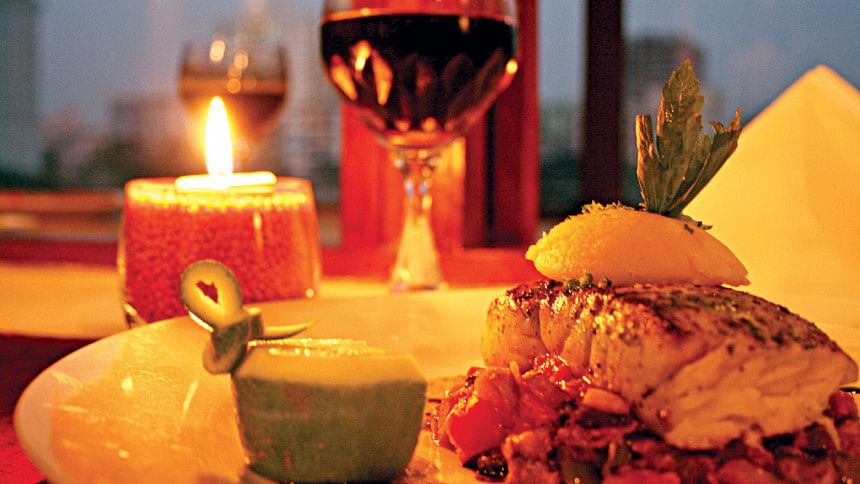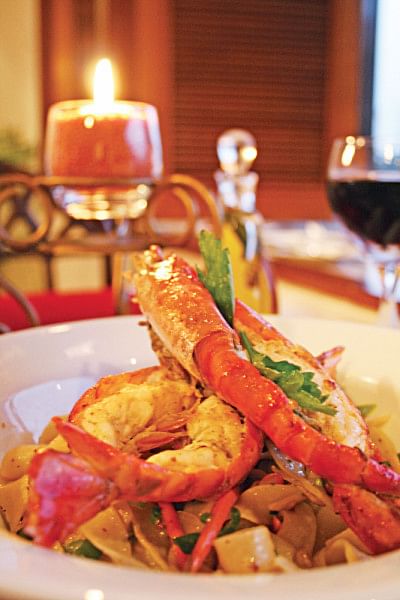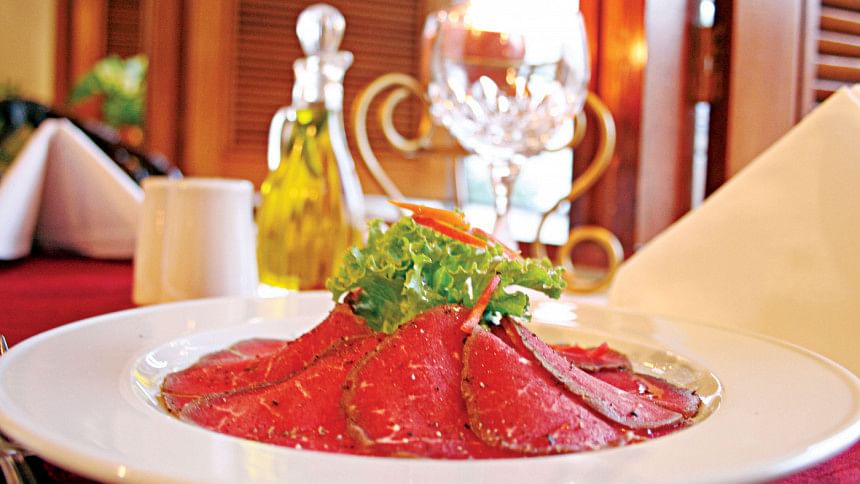Global kitchens


Cosmopolitanism is all about accepting societal norms and cultures from many different countries and being open to different ideas and ways of doing things. From fashion to cuisine, it was been injected into our everyday lives, and truly enough that it has become a staple in our kitchen and experiments with all things food.
If you take the case of vindaloo: the word vindaloo is a mis-constructed pronunciation of the popular Portuguese dish carne de vinha d'alhos (meat marinated in wine-vinegar and garlic), which made its way to India in the 15th century, along with Portuguese explorers.
In India, the dish had a Goan twist to it, and wine vinegar was substituted by palm wine, and local ingredients like tamarind pulp, black pepper, cinnamon, and cardamom found its way into the dish. However, when the dish travelled to England, it became just another bland, yet somewhat hot curry!
I mention the story of this famous dish for people to understand how cosmopolitanism found its way into our food habits.
For me, a soul food would be piping hot rice with a steak of hilsa fish fried in mustard oil, but for my child, soul food is chicken siu mai or prawn har gao, which are specific versions of Chinese dumplings. So much has changed between my child's generation and mine.
Food preference in our daily cuisine proves true to the fact that we experiment with our everyday dal-bhaat (lentil soup and steamed rice) menu. We have pastas on Monday nights, steaks over the weekends, soups and rice paper rolls on Tuesdays, burgers on Wednesdays and all these, which are not Bengali dishes, we prepare at home. Sometimes, the cooks do it for us in a way the lady of the house taught them, and they often experiment with their recipes, bringing in new twists to these common global foods.
I read somewhere that 'intellectual curiosity doesn't stop when you enter the kitchen', and its true. Cooking is an art where some of us follow the recipe to the tee, and some experiment all the while.
Exotic ingredients like pink Himalayan salt, green or pink pepper, Szechuan peppercorns, pomegranate molasses, sumac, tahini, and za'taar are not so strange anymore, in fact they are regular in our kitchen, just like our turmeric and chilli powder. Similarly, my foreign counterparts, be it an American or Meditarrean, have garam masala powder and curry powder stocked in their kitchen larder.
The question now is whether there is the unacknowledged or inappropriate adoption of the customs, practices, ideas, spices etc. or in one word, a cultural appropriation through this cosmopolitanism.

Personally, I would justify myself by saying that when I am experimenting with a vindaloo recipe, adding or subtracting from the original recipe is not a matter of grave concern, because then I make that dish out of my own understanding of the original recipe, which I can always follow when the occasion calls for it. But one thing as an experimental cook I must learn is the right usage of all the ingredients I collect. If I add za'taar or sumac to the fish curry, it would be an utter disaster. Or, if I start calling my beef stew a regular Bengali beef curry, that would be sacrilegious in the world of cosmopolitan kitchens!
On today's episode of Lifestyle Talkies, we sit down with freelancer and food enthusiast Kaniska Chakraborty discussing about global kitchens and its following stories. Tune in to The Daily Star, and Star Lifestyle's Facebook page at 7:30 PM today, Tuesday, 22 September. While you are at it, why not try our cosmopolitan recipes of rice from Chiangmi Talukder Lena on Page 9.
- RBR
Photo: LS Archive/ Sazzad Ibne Sayed

 For all latest news, follow The Daily Star's Google News channel.
For all latest news, follow The Daily Star's Google News channel. 



Comments